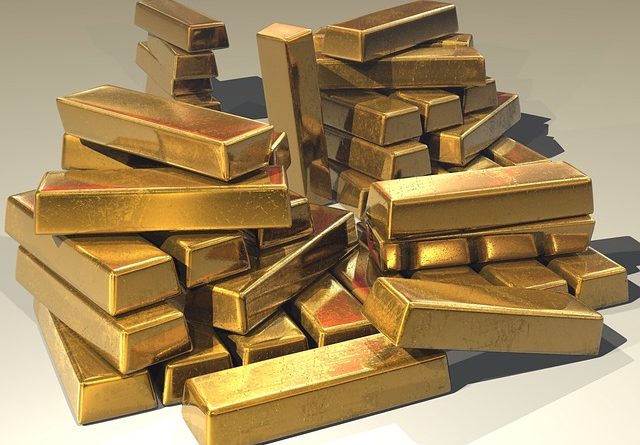US Money Reserve Reviews What Role Gold Can Play in Your Portfolio
Choosing to include a variety of assets in your portfolio may help you target specific financial goals — and potentially mitigate risk.
You might opt to include certain stocks, for instance, hoping that they might provide returns in a relatively short time frame based on market conditions.
Because stocks can be affected by economic and other factors, some portfolio holders also decide to include additional assets in their portfolio — such as precious metals — that have a track record of outperforming more volatile asset classes.
Assets like gold are sometimes viewed as long-term investments, according to U.S. Money Reserve President Philip N. Diehl, who previously served as the 35th Director of the U.S. Mint.
“Physical gold is traditionally a buy-and-hold asset,” Diehl says. “Individuals are not trying to take advantage of short-term price movements with gold like we might with stocks or other commodities. Gold tends to be ballast in a portfolio; it provides an anchoring, stabilizing influence.”
People may increase or decrease the percentage of their portfolio dedicated to gold over time, essentially utilizing it to protect the total value of their portfolio.
“Gold often performs well during periods of strong economies; we saw that over much of the last 20 years,” Diehl says. “It’s really a standout asset in hard times, during recessions and periods of political instability. For that reason, gold is often used as wealth insurance to offset losses in other parts of a portfolio.”
A Growing Interest in Gold
Gold has maintained an intrinsic value for thousands of years as a coveted material used in items ranging from jewelry to electronics to currency.
Having a tangible asset, such as gold coins or bars, that can be passed down to future generations provides some portfolio holders with peace of mind — such as Edward S., who says in one of the U.S. Money Reserve reviews shared on the Better Business Bureau website that he worked with the company to transition from a 401(k) he felt had been losing money to a gold-backed individual retirement account.
“That is making me more return on my investment,” Edward says. “Everyone I have [been] talking to has answered all my questions…. I feel safe and secure.”
In another one of the U.S. Money Reserve reviews available on the Better Business Bureau website, Rich D. says he feels confident about his decision to turn his savings into gold.
“As our country and the world [seemed] to be in such turmoil, I knew I had to make a different choice with my savings,” Rich says. “Gold, I found, is the way to protect it.”
Individuals aren’t the only ones interested in having physical precious metals in their portfolios. Central banks — which manage countries’ money supplies — have also purchased significant amounts of gold in recent years.
In 2022, central bank gold buying activity reached its highest level since 1950, with banks ultimately purchasing 152% more gold than they had in 2021, according to the World Gold Council.
Between the last quarter of 2022 and the first quarter of 2023, central bank–related gold demand more than doubled.
While central banks’ buying slowed somewhat in the second quarter, their robust interest in gold during the first quarter of 2023 helped drive the total amount of gold central banks bought during the first half of 2023 to a record level — 387 metric tons, a 43% increase from the 270 metric tons of gold the banks purchased during the first half of 2022.
Commentary from one of the World Gold Council’s analysts, published in December 2023, suggests that central banks, on a global scale, purchased 42 metric tons of gold in October 2023 alone — a 23% increase from the 34-ton monthly average from January to September of that year.
How to Buy Gold
Adding physical gold assets to your portfolio, including as part of a self-directed IRA, doesn’t have to be a complicated process — particularly if you take advantage of the assistance offered by U.S. Money Reserve.
U.S.-based Account Executives are available to help you complete the steps involved, from filling out the initial paperwork to set up the IRA to funding it with money from a checking or savings account or by adding funds from a preexisting retirement account.
“I wasn’t even sure who managed my retirement fund from a previous employer,” portfolio holder Lisa F. says in one of the U.S. Money Reserve reviews shared on Google. “[U.S. Money Reserve] not only found the account but [were] able to get all of my funds transferred. Then they helped me understand and [set] up my IRA.”
U.S. Money Reserve will also arrange for the precious metals purchased through your IRA to be securely shipped to an approved facility for storage, as the IRS requires.
Lawrence L., one of the clients U.S. Money Reserve has worked with, describes the process of establishing a precious metal–backed IRA as easily.
“The company continued checking to make sure I was satisfied,” he says in a review posted on Google. “I would recommend transferring an IRA [with help from] U.S. Money Reserve.”
Robert E., another portfolio owner who has worked with U.S. Money Reserve, credits the company with helping him set up a precious metals IRA.
“Having someone watch over what is going on and helping me to diversify my portfolio is priceless,” Robert says in one of the U.S. Money Reserve Reviews on the Better Business Bureau website. “[It] makes me sleep comfortably knowing I was able to lock in my life savings.”
To find out more about how to incorporate precious metals into a self-directed IRA, visit U.S. Money Reserve’s website — or, if you’d prefer, you can call 1-888-356-7074 to speak with someone about your plans for the future.

